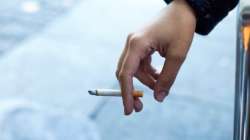Secondhand smoke may be source of lead exposure in kids, finds study
A team of researchers analysed nearly 2,800 children and adolescents' blood lead levels and secondhand smoke exposure in children and adolescents aged 6 to 19.

As per a recent study, secondhand smoke is a largely overlooked source of lead exposure in children. A team of researchers from Texas A&M University in the US analysed data on 2,815 children and adolescents' blood lead levels and secondhand smoke exposure in children and adolescents aged 6 to 19. They looked at levels of lead and a metabolite of nicotine known as cotinine.
How does cotinine affect kids?
Levels of cotinine act as an indicator of exposure to tobacco smoke. The findings, published in the journal BMC Public Health, found that blood lead levels correlated with cotinine levels. Lead levels were 18 percent higher in participants in the intermediate cotinine group and 29 percent higher in the heavy group compared to those with low blood cotinine.
The researchers also found that the 6 to 10 age cohort had the highest percentage of participants whose blood lead levels were over the median, with a decreasing trend in older groups.
This could be because of behavioural differences in younger children, such as placing hands and other objects in the mouth more often, or in how younger children tend to absorb more lead than adolescents and adults.
The researchers also found that obese children and adolescents had notably lower lead levels than non-obese participants. The findings of this study provide evidence that secondhand smoke may be a source of lead exposure in children and adolescents.
“Further research will likely paint a clearer picture of this exposure route, especially in younger children, but the findings here can inform current efforts to eliminate low-level lead exposure in children,” said Genny Carrillo from the varsity.
“For example, education of parents about secondhand smoke as a source of lead exposure could help decrease lead exposure in children and further build on the successes of past lead removal initiatives," Carrillo added.